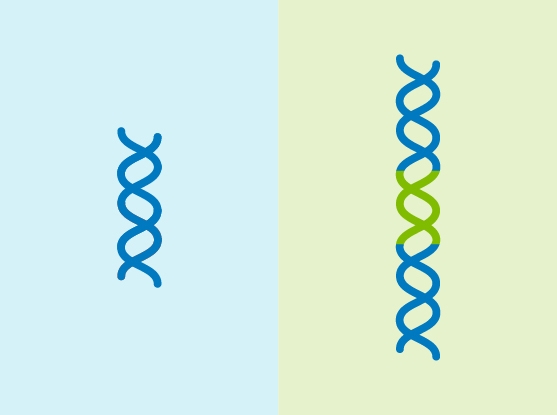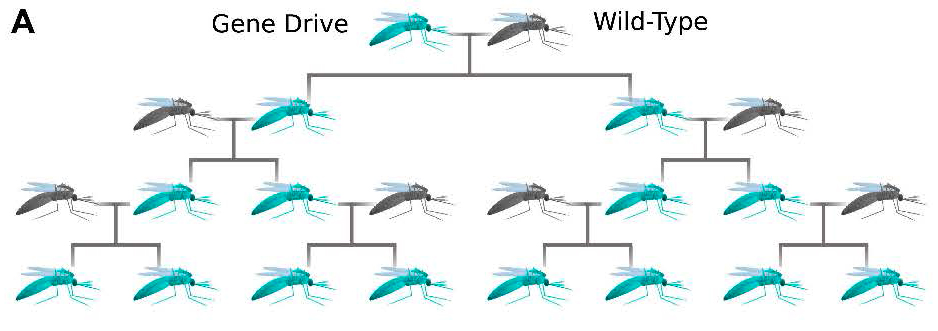Gene Editing
by Amelia Hoskins · Published · Updated

CRISPR technology physics.org article
CRISPR was first derived from a bacterial immune response that uses RNA to protect itself against plasmids and viruses by breaking specific DNA sequences in the pathogen's genome. With the CRISPR technology, researchers have co-opted that system to edit any gene, allowing them to make precise genetic changes for a desired effect.
2021: Gene therapy developments
Nature Biotechnology 'Describes twin prime editing (twinPE), a technique that makes two adjacent prime edits to introduce larger sequences of DNA at specific locations in the genome with few unwanted byproducts.....'

Obviously a very lucrative market, considering the adverse reactions from covid vaccine gene therapy. Intuitively I think meddling with DNA construction might cause epigenetic changes in ALL people, even without the therapy. There's no stopping the biotechnologists who treat the human body workings like a machine.

Gene domination in 4 generations
The gene drive mechanism may allow scientists to control malarial mosquitoes or pesticide-resistant pests, for example, by using CRISPR to introduce a mutation (allele) into a few individuals in a population and have that mutation quickly spread through the entire population; but researchers fear such gene drives could have unintended consequences, such as spreading into an unintended species. (Will anyone care?)
Nano clews - CRISPR Cas9 Gene Editing

The nanoclews are made of a single, tightly-wound strand of DNA. The DNA is engineered to partially complement the relevant CRISPR RNA it will carry, allowing the CRISPR-Cas9 complex - a CRISPR RNA bound to a Cas9 protein—to loosely attach itself to the nanoclew.
"Multiple CRISPR-Cas complexes can be attached to a single nanoclew,"
~ Wujin Sun, lead author of the study and Ph.D. student in Gu's lab.
When the nanoclew comes into contact with a cell, the cell absorbs the nanoclew completely - swallowing it and wrapping it in a protective sheath called an endosome. The nanoclews are coated with a positively-charged polymer that breaks down the endosome setting the nanoclew free inside the cell. The CRISPR-Cas9 complexes can then free themselves from the nanoclew to make their way to the nucleus. And once a CRISPR-Cas9 complex reaches the nucleus, gene editing begins.
Description of CRISPR technology taken from Calvin Mercer's book Religion and the Technological Future
‘A transformative breakthrough is CRISPR (clustered regularly interspaced short palindromic repeats), a technology being developed at highly reputable places, such as MIT and Harvard University. CRISPR can locate genetic code in DNA, and then an enzyme that is produced by the CRISPR system, such as Cas9, binds to the DNA and cuts it when the target DNA is located. Cas9 stands for “CRISPR associated protein 9.” Cas9 is an enzyme that acts like a pair of scissors to cut the two DNA strands in specific places in the genome to allow for the addition or deletion of DNA material. CRISPR-Cas9 allows for the precise, quick, and inexpensive editing of DNA. Other systems in addition to Cas9, such as CPF1, are being developed. Cas9 can be modified to activate genes as well as delete them. Gene editing technologies such as CRISPR-Cas9 may allow for senescent (growing old) cells to regain youthful structure and function. Much depends on our ability to identify relevant genes and clusters of genes. Only time will tell how this science proceeds, but there is much optimism.’
The Rockefeller University and Broad Institute of MIT and Harvard
2018: 'An update regarding inventorship and ownership of certain Broad filings relating to the use of the CRISPR-Cas9 system in eukaryotic cells.'
About The Rockefeller University
'The Rockefeller University was founded in 1901 by John D. Rockefeller with the credo, ‘Science for the benefit of humanity’. Rockefeller’s 82 faculty laboratories, located on its 14 acre Manhattan campus, conduct highly innovative research addressing the most critical questions in the life sciences and medicine. Rockefeller scientists have made many of the world’s most revolutionary contributions to biology and medicine, (own link post) and have been awarded 25 Nobel Prizes, 22 Lasker Awards, and 20 National Medals of Science.'

































